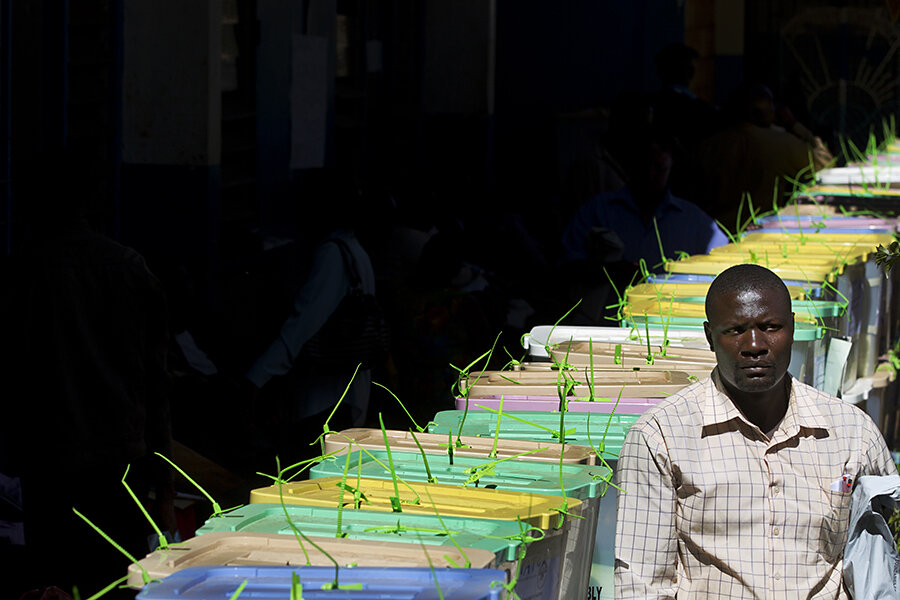From Kenya, US gets helping hand with election monitoring
Loading...
| Johannesburg, South Africa
Eight years ago, as post-election violence swept her native Kenya, activist and lawyer Ory Okolloh tried frantically to keep pace with the developments on her popular politics blog, using tips from journalists, legislators, and ordinary Kenyans to share news about attacks and intimidation around the country.
Then she had a somewhat counterintuitive idea – why not write herself out of that equation? What if Kenyans could report the violence themselves, on a platform that would track and display trends across the country in real time?
The result was Ushahidi – Swahili for “testimony" – a crowd-sourced map showing reports of violence collected by text message. It proved so popular and effective that in the years that followed, the open-source software spread around the world, finding uses from monitoring post-earthquake disaster relief in Haiti to tracking road closures after snowstorms in Washington D.C.
Now, the company’s developers have turned their attention on the US presidential election. The USA Election Monitor, which went live last week, is an interactive map that displays real-time reports from the public of any attempts at voter intimidation or fraud. Members of the public can contribute reports via text, email, Twitter, or phone, while volunteers will sort and verify the claims.
“The strategy is that if you allow people to be more engaged in the political process, then they’re more likely to find that process as credible,” says Daudi Were, Ushahidi’s executive director. “We’re also trying to get a snapshot of what’s really happening on election day so that when, in the future, we have these discussions [about vote rigging and fraud] we can speak from a point of view that’s more informed and knowledgeable.”
The latter point is especially important in this election, he says, given the unprecedented level of public conversation about corruption in voting. Republican candidate Donald Trump has spurred the discussion in recent days by pointing to what he alleges are instances of irregular voting practices in swing states from Nevada to Florida. He is calling on his supporters to become election observers.
US elections are already monitored by a wide variety of parties. They range from the patently partisan – volunteers of the two campaigns – to the Department of Justice – which sends watchers to areas with a history of racial discrimination at the polls. International observers like the Organization for Security and Cooperation in Europe (OSCE) and the Organization of American States (OAS) also get involved.
Into that mix, a platform like Ushahidi offers a different kind of observation – one that comes directly from voters themselves, with little filter. That kind of technology has been pioneered powerfully in places like Kenya, where crowd-sourced technologies have long allowed the public to leapfrog corrupt institutions and creaking bureaucracies in reporting public misdeeds like voter intimidation and bribery. In the US, too, Ushahidi has the potential to add new intelligence to future conversations about voter intimidation and fraud, though its data should also be taken with a grain of salt, says Katy Collin, a political scientist who has written about election monitoring in the United States.
“True election observation is informed and systematic, and this site could be both but could also be neither,” she says.
The team at Ushahidi say they are not particularly worried about widespread election violence or voter fraud in the United States. But smaller issues abound, from long queues and issues with ballots and IDs to outright intimidation at polling places. And the only way to have an informed dialogue about those issues going forward, Mr. Were says, is to come bearing facts.
“There’s a popular saying that I think applies here,” he says. “In God we trust. Everyone else bring data.”








